For patients with multiple sclerosis (MS) who are treated with injectable disease-modifying therapies (DMTs) for more than 2 years, the risk of relapse is 55 to 80%, and the risk of disability progression is 33 to 46%.1 Patients who demonstrate suboptimal response to these therapies are often switched to natalizumab (Tysabri) or fingolimod (Gilenya) for treatment escalation. Though these agents are considered to have higher efficacy than the injectable DMTs, there is limited data regarding their impact in breakthrough disease.2
A study published in March 2015 in the Annals of Neurology is the first to compare the effects of switching to natalizumab or fingolimod in patients with relapsing-remitting MS (RRMS) who have continued disease activity despite treatment with injectable DMTs.2
“Given practical and financial limitations, it is unlikely that escalation to natalizumab or fingolimod will be directly compared in a randomized head-to-head trial,” the authors wrote. “A feasible alternative strategy is to utilize existing longitudinal registries of clinical outcomes data.” Using data from the MSBase observational cohort study, researchers conducted a propensity score-matched analysis of 578 patients who had switched from injectable DMTs to natalizumab (407 patients) or fingolimod (171 patients) after documented breakthrough disease activity within the previous 6 months. In the 2 years post-switch, the investigators found that while both agents reduced relapse activity and disability, natalizumab was more effective. There was a decrease in annualized relapse rates from 1.5 to 0.2 for natalizumab and from 1.3 to 0.3 for fingolimod, and rates of 6-month sustained disability regression were 2.8 times higher after switching to natalizumab vs fingolimod.
“When a first-line injectable therapy has not had a sufficient effect, escalation of therapy to a more potent agent is preferred over switching to another agent within the same category of therapies,” study co-author Tomas Kalincik, MD, PhD, a research fellow at the University of Melbourne in Australia, toldNeurology Advisor. “There are a number of candidate therapies, and choosing the right one is a complex process that involves careful consideration of the individual patient’s life circumstances, family plans, experience with previous therapies, preferred route of administration, concomitant diseases, and treatment efficacy.”
Before discontinuing a particular therapy due to suboptimal response, however, it is important to confirm that the patient has been compliant with taking it, Patricia K. Coyle, MD, a neurology professor and director of the MS Comprehensive Care Center at Stony Brook University Medical Center in New York, told Neurology Advisor. Once adherence has been addressed, “efficacy of the drug now moves to a more important consideration, as the patient has declared themselves to have more active disease than usual, favoring use of a high efficacy DMT.” Pros and cons of the various alternatives must be weighed for each patient based on a range of personal factors.
Natalizumab: Efficacy with a Risk
Natalizumab is highly effective and generally well-tolerated, and the “fact that natalizumab is infused affords observed administration and may lead to higher medication adherence,” Thomas P. Leist, MD, PhD, director of the Comprehensive Multiple Sclerosis Clinical Center at Thomas Jefferson University in Philadelphia, told Neurology Advisor.
A major downside of natalizumab, however, is its associated risk of progressive multifocal leukoencephalopathy (PML). Testing for JC virus antibodies can help physicians stratify a patient’s risk of PML while on natalizumab therapy, and “recently it has been suggested that less frequent infusions or potentially weight-based dosing may also help to control risk even in individuals who test positive for JC antibody,” though more research on these approaches is needed. While JC antibody testing is an important tool, a significant number of patients who test negative still harbor the virus, and some have been found to subsequently convert to positive status, noted Dr Leist, who has co-authored a significant body of research on MS therapies.3,4,5
Fingolimod: A Foe to Comorbidities
Advantages of fingolimod include high efficacy and tolerability and the convenience of oral therapy with a low risk of PML, said Dr Coyle, who has also studied MS treatment extensively.3,4,5 Some negative points to consider include “the inconvenience of extensive pretreatment testing and first dose observation, and the fact that coexisting morbidity — significant cardiac or pulmonary disease, diabetes, uveitis — is a relative contraindication to therapy.”
A Personal Decision
Ultimately, the patient and physician must decide mutually on the most appropriate treatment option and acceptable level of risk of PML. Patients with high disease activity and multiple indicators of poor prognosis, for example, may decide that a higher level of efficacy is worth an increased risk.
Meanwhile, research continues to work towards facilitation of more precise personalization of treatment. Using data from the MSBase registry, Dr Kalincik and colleagues have been investigating the topic of individually tailored therapy, and they believe they “will soon be able to provide clinicians and their patients with some valuable supportive information concerning individual treatment choice,” he said.
References
1. Tramacere I, Del Giovane C, Salanti G, D’Amico R, Filippini G. Immunomodulators and immunosuppressants for relapsing-remitting multiple sclerosis: a network meta-analysis.Cochrane Database Syst Rev. 2015; doi: 10.1002/14651858.CD011381.pub2.
3. Cohen BA, Coyle PK, Leist T, Oleen-burkey MA, Schwartz M, Zwibel H. Therapy Optimization in Multiple Sclerosis: a cohort study of therapy adherence and risk of relapse.Mult Scler Relat Disord. 2015;4(1):75-82.
4. Coyle PK, Cohen BA, Leist T, et al. Therapy optimization in multiple sclerosis: a prospective observational study of therapy compliance and outcomes. BMC Neurol. 2014;14:49.
5. Leist TP, Comi G, Cree BA, et al. Effect of oral cladribine on time to conversion to clinically definite multiple sclerosis in patients with a first demyelinating event (ORACLE MS): a phase 3 randomised trial. Lancet Neurol. 2014; 13(3):257-67.













